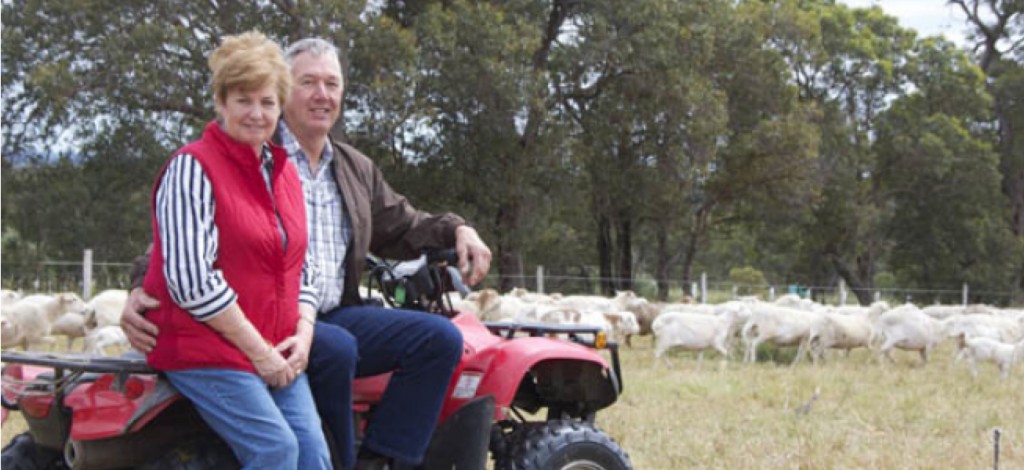
When Morawa farmer Ian Tubby ‘retired’ to Gingin in 2010, he invested his leisure time in the pursuit of developing an ideal cleanskin sheep. Along the way he also discovered a method of cooking lamb which is bound to tantalize local palates.
A trip overseas with wife Betty back in the nineties convinced Ian that the wool industry held no rewards. “ I was shocked to discover that less that 1.5% of the world’s fibre is wool,” he said. Soon after Ian ‘flicked the fleece’ and replaced his high-maintenance merino herd with the self-shedding Damara in 1997, a breed introduced into Australia from South Africa just the previous year.
Tough and long-legged, the Damara fares well in the Australian climate and the Tubby family ran a mob of 6000 Damaracross ewes at their Morawa property, enjoying success for many years through live exports – primarily to Saudi Arabia and the Middle East.
However when the Cormo Express disaster eleven years ago effectively shut down trade to Saudi Arabia, Ian turned his interests to the local market. “We then realised that the butchers here didn’t really like the Damara on the hook.
They are like a goat and too lean. They prefer a carcass that’s big and bulky and they don’t mind a bit of fat.”
At this stage the Dorper was gaining popularity as a easy-care cleanskin, and Ian invested in a mob – with frustrating results. “The Dorpers were notorious fence wreckers and I soon fell out with all my neighbours over them” he recalls.
The conundrum led Ian to further analyse the four main cleanskin breeds, the Dorper, Damara, Wiltipoll and Van Rooy and his research indicated a real need for all-purpose, hardy, versatile and productive breed that offered sheep breeders a good return. Herein he developed the Wiltidam, a breed he released in 2007 and registered with the Cleanskin Sheep Association in 2011.
He touts the Wilitdam as a reliable producer for both the domestic and export market and relies on a substantial 160% lamb drop per year. More unusually he has selectively bred his mob to be respective of yards and fences; a trait which is equally desirable. More about the breed’s characteristics on page 10.
Having recently entered into a supply agreement with local butcher Bindoon Fresh Meat, Ian and Betty are also keen to introduce a method of cooking lamb they believe to be revolutionary. “This method of consuming lamb, where the skin is left on to produce a crackle, as it is with pork, is absolutely delicious,” says Ian, “We believe this idea has enormous potential and it utilises a potential protein which is usually discarded.”
Craig Herbert, from Bindoon Fresh Meats, is familiar with the process, normally used in goat meat, and common in Asian countries. He will showcase the skin-on-lamb at the shop on Bindoon Show day. Don’t miss the opportunity to sample it for yourself!








